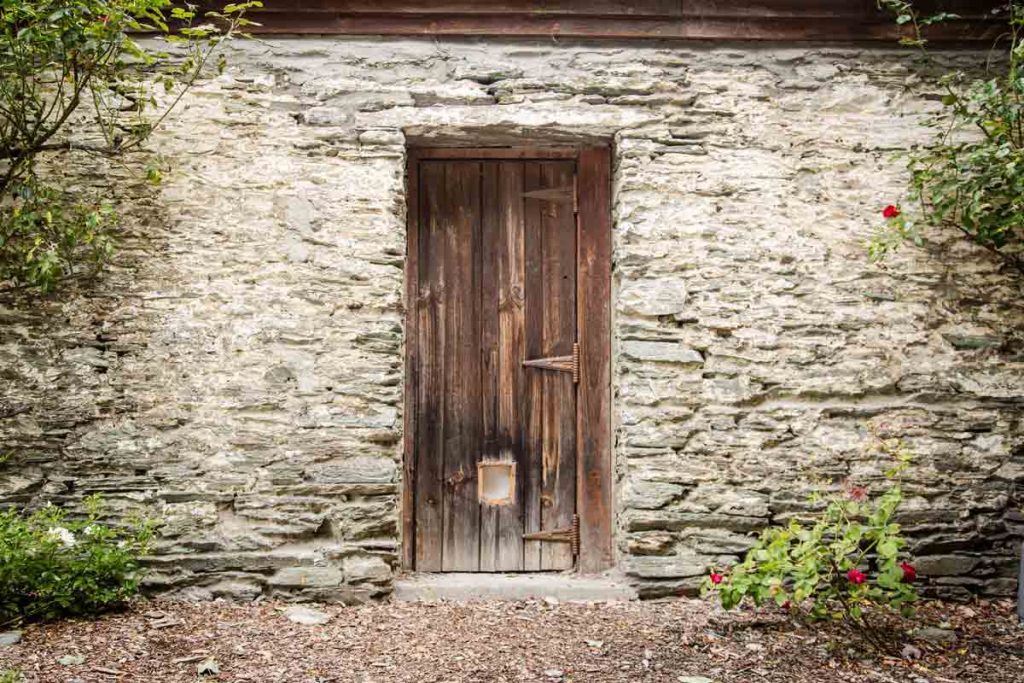In ancient times, men and women protected their homes by festooning their doorways with flower garlands, affixing mistletoe or pine boughs to the lintels overhead, or rubbing the doorposts with garlic or other potent herbal mixtures. The custom of a groom carrying his bride across the threshold of their home also has its roots in ancient agriculture. It is believed to have had some connection to “threshing,” or using the feet to separate usable seeds and grains from husks and stems, dried straw, and chaff. The origins of the word thresh are identical to those of turn, contour, return, and thread. And today, threshold not only refers to a doorway or gate, but also means both a new beginning and a limitation. Throughout the history of Zen, there have been commentaries on gates and doors.
Virtually every teacher in every time period has seen the value in directing the student’s attention toward these common points of entry. All types of doors—from massive wooden barriers to the famous “gateless gates”—figure in Zen’s literature. Students learned early on that doors and gates are not only for walking through but also for thinking about. In fact, in Zen practice, any object or idea can become a door. And behind every door there is a buddha waiting to be discovered.
Inside your own home, doors do not usually require much maintenance or consideration. A door should have a full range of motion, so keep furniture and other objects a good distance from where the door might strike them. A doorstop will protect both the door and the adjoining wall. You can silence any squeaks with an occasional application of oil. You might, rarely, need to replace worn paint or varnish or to perform a minor adjustment of the hinges or fit. But for all of their continued use, they make few demands on us.
Do not think of doors as obstacles to whatever is on the other side. Practice opening them magnanimously and closing them with care. Through the mundane activity of entering or leaving a doorway, you can make a commitment to being either inside or outside of something larger than yourself. You can think about what you are leaving behind, about what you are entering into. In the Zen training halls, there are rules about opening, closing, entering, and exiting through zendo doors. These rules are liberating. It is one of the great ironies of Zen practice that through the rigid use of such rules, a sense of freedom is gained.
Doors are more than wood or metal, more than hinges, pivots, fulcrums, locks. They are places that can become turning points—either you pass through them, or they block your path. You discover your own limits and thresholds. Sometimes it doesn’t take anything very substantial for you to fabricate a closed door. For example, when the lock on a bathroom door is absent or broken, a cough, whistle, or quiet song can bar the door. At other times, it may take a more drastic solution to achieve this effect. The writer Jack London, gregarious as he was, often felt the need for privacy when he was writing. He hand-lettered a small sign for his door to be used at such times: “1. Please do not enter without knocking. 2. Please do not knock.”
As you walk from room to room in your own home, try to really experience the transition of traveling from one place to another. Notice the differences between motion and stillness. Sense how you relate to various enclosures and open spaces. Feel the differences between entering and leaving, if there are differences. Contemplate the thoughts that become caught between places, in the doorways themselves, and think of the people who have walked these paths before you. While you’re thinking of others, the doors of your household begin to become the gates of compassion.
Suzuki Roshi stressed repeatedly that, just like the swinging door, we should move freely back and forth throughout the various aspects of our lives, both wholly independent and, at the same time, completely connected to all things. He viewed the very act of breathing at the breath’s entering and exiting a doorway. The image of stepping through a doorway is symbolic of your actual entry into your own life. It might be compared to a film loop in which you’re entering the same door over and over again. You are always entering through the doorway of this very moment. There is no retreat. No heading for the exits. Just a continual “going in” to this eternal NOW!
♦
From Sweeping Changes: Discovering the Joy of Zen in Everyday Tasks, © 2000 by Gary Thorp. Reprinted with permission of Walker & Company.
Thank you for subscribing to Tricycle! As a nonprofit, we depend on readers like you to keep Buddhist teachings and practices widely available.
